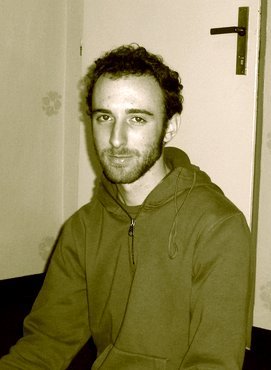Tian'anmen Square and the Forbidden City
Though National Day occurred on October 1, Allyssa and I were first able to make our way to Tian'anmen Square on the morning of the 3rd for the Flag raising ceremony. As most of you know, this was the sight of the massacre of probably thousands of students protesting for democracy in 1989. It is also the world's largest public square, the size of 90 football fields (covering 99 acres) with standing room for 300,000 people.
We awoke at around 4am again and arrived at about 5:50. With sunrise at 6:11, we though this would be early enough, but by this time, the enormous square was already packed with at least 20,000 people; on National Day, the crowds are multiplied several times over. As the sun rose, hundreds of soldiers marched in perfect rhythm and made their way to the flag pole, where the flag was raised to the sound of the Chinese National Anthem, " "Song of the Advancing Volunteer Army" (義勇軍進行曲).
After the flag was raised, we still had quite a bit of time before the other sights opened, so we wandered around the square for a while. This is the old South Gate, Zhenyangmen, to Beijing.

Below is a view of the Great Hall of the People, which is where the National People's Congress meets, and the Monument to the Heroes, which commemorates the victims of the revolution during the mid-century. Behind me, unseen, is Mao's Mausoleum. For a few hours a day, his body is raised from a freezer for viewing.

At the north end of Tian'anmen square is this massive portrait of Mao, which hangs over the entrance to the Forbidden City (Gugong). It's pretty much a rite of passage for Chinese visitors to have their picture taken with Mao, so we figured we might as well join in on the fun.

Below, the expansive Forbidden City, which has more than eight hundred buildings spread over the square kilometre site. This is where the 24 emperors from the 16th-20th centuries lived, separated from the people they ruled.


We awoke at around 4am again and arrived at about 5:50. With sunrise at 6:11, we though this would be early enough, but by this time, the enormous square was already packed with at least 20,000 people; on National Day, the crowds are multiplied several times over. As the sun rose, hundreds of soldiers marched in perfect rhythm and made their way to the flag pole, where the flag was raised to the sound of the Chinese National Anthem, " "Song of the Advancing Volunteer Army" (義勇軍進行曲).
After the flag was raised, we still had quite a bit of time before the other sights opened, so we wandered around the square for a while. This is the old South Gate, Zhenyangmen, to Beijing.

Below is a view of the Great Hall of the People, which is where the National People's Congress meets, and the Monument to the Heroes, which commemorates the victims of the revolution during the mid-century. Behind me, unseen, is Mao's Mausoleum. For a few hours a day, his body is raised from a freezer for viewing.

At the north end of Tian'anmen square is this massive portrait of Mao, which hangs over the entrance to the Forbidden City (Gugong). It's pretty much a rite of passage for Chinese visitors to have their picture taken with Mao, so we figured we might as well join in on the fun.

Below, the expansive Forbidden City, which has more than eight hundred buildings spread over the square kilometre site. This is where the 24 emperors from the 16th-20th centuries lived, separated from the people they ruled.





0 Comments:
Post a Comment
<< Home